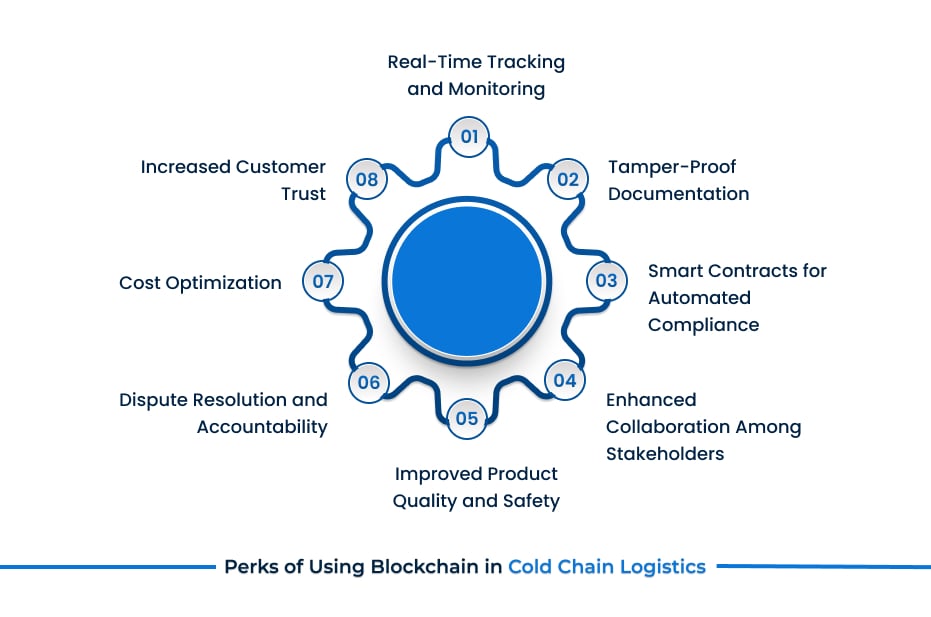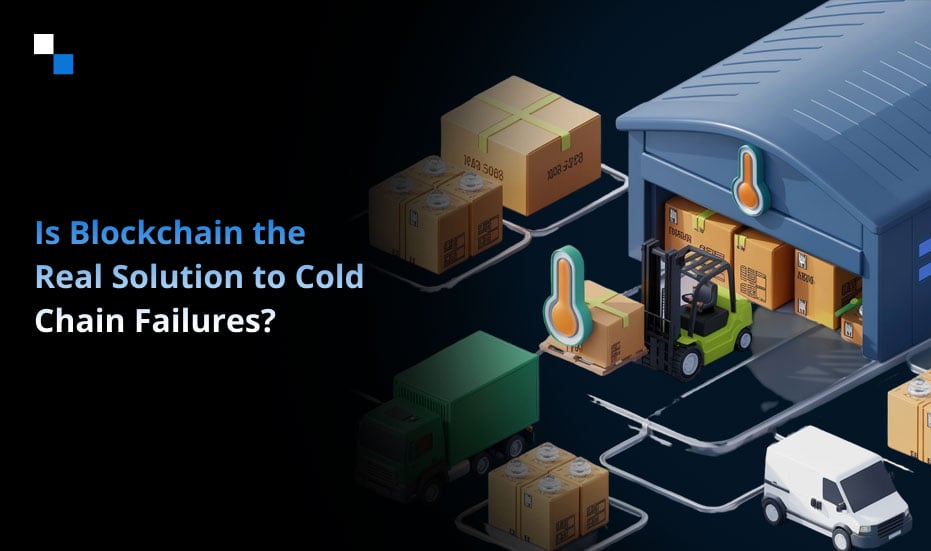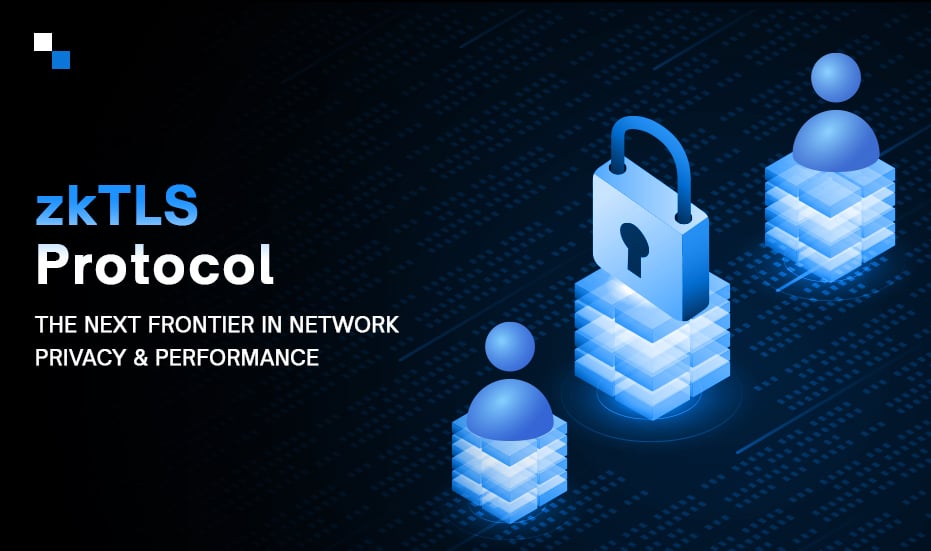
Why Invest in Tokenized US Treasury Platform Development Now?
April 3, 2025
Top 10 AAA Game Development Companies in 2025
April 3, 2025Imagine when life-saving vaccines spoil silently in transit, fresh produce loses its quality before it reaches the consumer’s plate, and pharmaceutical companies grapple with millions in losses, all because someone, somewhere, didn’t notice a slight temperature fluctuation. This is not a fiction, but a harsh reality of cold chain logistics for decades.
According to the World Health Organization, nearly 50% of vaccines worldwide go to waste each year, largely due to inadequate temperature control and the absence of a reliable, unbroken cold chain.
What if there was a way to lock in trust, visibility, and accountability at every step of the journey? That’s where blockchain in cold chain logistics steps in, which is considered an ideal technology for temperature-sensitive shipments. Blockchain shipping logistics revolutionize how businesses monitor, manage, and validate every movement in the supply chain.
In this blog, we’ll explore how blockchain brings authenticity and compliance to cold chain logistics, backed by statistics, real-world use cases, and a roadmap to future-proof your operations.
The Critical Role of Cold Chain Logistics in Global Supply Chains
Cold chain logistics form the backbone of several critical industries, including healthcare, food and beverage, chemicals, and agriculture. It refers to the temperature-controlled supply chain that ensures sensitive products remain within a specific temperature range from production to delivery.
“According to Fortune Business Insights, the global cold chain logistics market was valued at USD 293.58 billion in 2023 and is projected to grow from USD 324.85 billion in 2024 to USD 862.33 billion by 2032, exhibiting a CAGR of 13%.”
This massive growth underscores the increasing demand for safe and efficient cold chain management. Yet, despite technological advancements, cold chain logistics still suffer from numerous challenges.
Key Challenges in Cold Chain Logistics

1. Temperature Excursions and Product Spoilage
Temperature-sensitive products like vaccines or fresh food can spoil if the required temperature range isn’t maintained during transit. Even brief temperature excursions can degrade product quality, cause health risks, or lead to financial losses. Current systems often fail to detect or react promptly to such fluctuations, resulting in wastage.
2. Lack of Transparency and Visibility
Cold chain logistics involve multiple stakeholders across different locations. Hence, such a complex system makes it difficult for users to track shipment conditions in real time. The current systems offer limited visibility, which causes information gaps and mistrust. Without a transparent system, stakeholders can’t verify product handling, and this is what increases the risk of spoilage, delays, and compliance issues.
3. Manual Errors and Data Manipulation
Most cold chain documentation relies on manual data entry and paper-based processes that are prone to human errors and inconsistencies. Additionally, centralized data storage is vulnerable to manipulation or unauthorized changes, which compromises the accuracy and integrity of shipment records, and makes it difficult to trace the source of issues.
4. Regulatory Compliance Issues
Industries like pharmaceuticals and food face stringent regulatory requirements for product storage and transportation. Failure to comply can result in hefty fines, legal action, or product recalls. Maintaining accurate, tamper-proof audit trails on traditional systems is challenging, which also complicates the process of compliance reporting and increases the risk of regulatory violations.
5. Inefficient Dispute Resolution Among Stakeholders
Disputes over damaged goods, delayed deliveries, or temperature breaches are common in cold chain logistics. Without reliable, verifiable data, resolving these disputes is time-consuming and often leads to financial losses or damaged business relationships. A lack of accountability further complicates conflict resolution between supply chain partners.
How Blockchain in Cold Chain Logistics Is Redefining Temperature-Controlled Shipping
So, what does blockchain bring to the table?
Blockchain in cold chain logistics introduces a decentralized, distributed ledger that records every transaction, shipment movement, and temperature reading in real time. Each block in the blockchain contains verifiable data that cannot be altered without consensus, ensuring transparency and accuracy.
Here’s how blockchain is transforming temperature-controlled shipping:

1. Real-Time Tracking and Monitoring
Blockchain integrated with IoT sensors enables real-time tracking of temperature, humidity, and location of shipments. The data is automatically recorded on the blockchain, accessible to all authorized parties. Blockchain provides a single source of truth accessible to all participants in the supply chain. It enhances visibility of the product’s journey from origin to destination and helps stakeholders make informed decisions.
2. Tamper-Proof Documentation
One can expect higher data authenticity as every transaction and temperature reading is immutably recorded on a distributed ledger. This digital tamper-proof documentation eliminates manual errors and manipulation and significantly improves compliance and accountability.
3. Smart Contracts for Automated Compliance
Smart contracts automatically enforce compliance rules and trigger actions when conditions are met or breached. For example, if the temperature goes beyond the allowed limit, a smart contract can instantly notify stakeholders and halt payment.
4. Enhanced Collaboration Among Stakeholders
Blockchain eliminates the need for intermediaries by providing a shared, transparent ledger to manufacturers, transporters, distributors, and regulatory bodies. This fosters trust and speeds up decision-making.
5. Improved Product Quality and Safety
With real-time monitoring and immutable data records, businesses can ensure that products have maintained the desired temperature throughout the supply chain. This significantly reduces spoilage and safety risks.
6. Dispute Resolution and Accountability
Blockchain in cold chain logistics also provides clear, indisputable records of product handling and shipment conditions that minimize disputes to a great extent. In case of discrepancies, stakeholders can quickly identify the responsible party.
7. Cost Optimization
By reducing product spoilage, manual paperwork, compliance costs, and disputes, blockchain helps businesses save significantly. The automation of documentation processes further reduces administrative overheads.
8. Increased Customer Trust
In industries like pharmaceuticals and food, customers demand transparency about product origin and handling. Blockchain allows businesses to share verified data with customers, enhancing brand credibility and trust.
Why Now Is the Right Time to Invest in Blockchain Cold Chain Solutions
The following are the key factors showing why now is the ideal time to invest in blockchain cold chain solutions:
1. Growing Demand for Temperature-Sensitive Products
The rise in global demand for temperature-sensitive goods, such as COVID-19 vaccines, biologics, and premium perishable food, has exposed vulnerabilities in cold chain logistics. Blockchain in cold chain logistics offers a scalable solution to meet these growing demands.
2. Stringent Regulatory Requirements
Governments and regulatory bodies are enforcing stricter compliance norms, including the US Drug Supply Chain Security Act (DSCSA) and the EU Falsified Medicines Directive (FMD). Blockchain simplifies compliance through automated, immutable records.
3. Rising Costs and Supply Chain Disruptions
Supply chain disruptions and increasing operational costs necessitate more efficient, transparent, and automated solutions. Blockchain shipping logistics reduces overheads by streamlining processes and eliminating intermediaries.
4. Advancements in Blockchain and IoT Integration
The convergence of blockchain with IoT devices has made real-time, automated, and reliable cold chain monitoring a reality. The combined technologies deliver accurate, tamper-proof data across the entire supply chain.
5. Consumer Awareness and Demand for Transparency
Today’s consumers want to know where their food and medicine come from and how they’ve been handled. Blockchain meets this demand by providing transparent, verifiable supply chain information.
How to Get Started with Blockchain in Cold Chain Logistics
Adopting blockchain in cold chain logistics requires a strategic, phased approach to ensure successful implementation. Here’s how businesses can get started:
- Assess Business Needs and Challenges: Identify specific challenges in your cold chain logistics, such as temperature excursions, compliance issues, or lack of visibility, that blockchain can address.
- Choose the Right Blockchain Platform: Select a blockchain platform that suits your business requirements. Popular choices include Hyperledger Fabric, Ethereum, and Corda, each offering unique features for supply chain use cases.
- Integrate IoT Sensors and Smart Devices: Implement IoT devices and sensors to capture real-time data on temperature, humidity, and location. These devices must be seamlessly integrated with the blockchain platform.
- Develop Smart Contracts: Design smart contracts to automate compliance, payments, and alerts based on pre-defined conditions like temperature deviations or delivery delays.
- Collaborate with Stakeholders: Engage with all stakeholders, manufacturers, logistics providers, regulators, and distributors, to ensure they understand and adopt the blockchain solution.

Conclusion
Blockchain can authenticate product handling and deliver real-time transparency, which provides businesses a competitive edge they always strive. At Antier, we specialize in blockchain supply chain development tailored to your industry needs. Our team of blockchain architects, developers, and supply chain analysts can help you build a solution from the ground up, whether it’s a cold chain tracking app, a smart contract-based compliance system, or a full IoT-integrated logistics platform. We bring deep experience in developing end-to-end blockchain cold chain monitoring systems that improve visibility, reduce loss, and help you comply with regulations seamlessly. If you’re ready to eliminate inefficiencies and gain trust across your supply chain, connect with us today.
Let’s build a smarter, safer, and more transparent future together.



